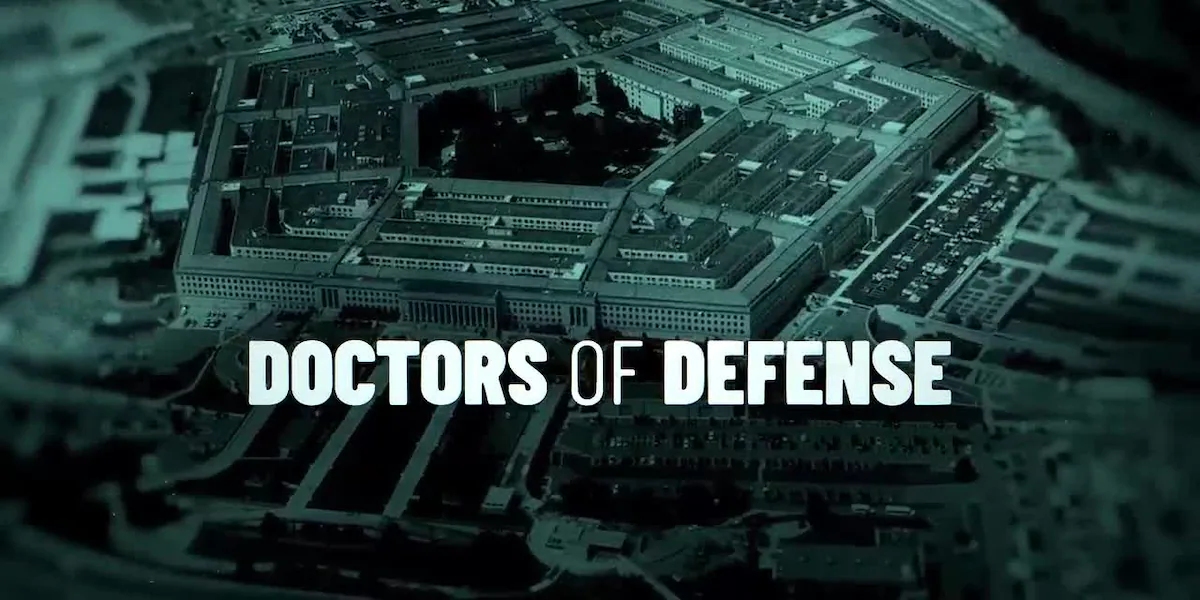Copyright WIS10

(InvestigateTV) — Dr. Peter Pronovost still vividly remembers the patient’s wife crying through the phone to him. Her husband had gone through esophageal surgery at a Maryland hospital and, following serious complications, was later brought to Johns Hopkins, where Pronovost worked as a critical care physician. The woman was inconsolable and grief-stricken, not just because she’d just learned that her husband would not survive. She’d also made a shocking discovery about the hospital her family originally trusted: The facility had only performed the procedure once in two years. “It so epitomizes the problem we have because even well-educated people, I don’t think, even dream of asking. They just assume if you’re going to do something on me, you’re competent, right? And that isn’t always the case,” Pronovost said. It’s an assumption that surgical patients nationwide routinely make about something called surgical volume – how many times a particular hospital or physician performs a certain surgery. Research has consistently shown that higher volumes have a direct link to better surgical outcomes. Yet patients are often kept in the dark about this critical number that could mean the difference between life and death – not just at civilian hospitals, but at military facilities funded by taxpayer dollars. An InvestigateTV analysis of surgical volume data shows military treatment facilities across the nation and around the globe have consistently failed to meet minimum standards on a set of critical procedures with agreed-upon benchmarks, potentially putting service members and their families at risk. In fact, in the last two years, not a single military hospital has met benchmarks on some of the most difficult surgeries involving the heart, lung, and other key organs. “If you’re very, very low volume, it’s like you’re on really steep acceleration. Your risk of harm is very, very high,” said Pronovost, who now works with University Hospitals in Cleveland and is widely considered one of the nation’s leading healthcare quality experts. Military whistleblower shines a light on surgical volume concerns InvestigateTV began examining surgical volume at military hospitals from coast to coast after a medical whistleblower raised the issue in an interview with our team earlier this year. This source previously provided confidential records that showed how the military shrouds malpractice cases in secret and allows the doctors who made serious errors to keep treating patients. “There’s a number of things I’ve encountered in the military that haunt me,” he said. However, no other issue has concerned him more than surgical volume. The whistleblower, who InvestigateTV is not identifying because he’s still considered active duty and could risk professional and legal repercussions, is an Ivy League-educated surgeon. He’s worked in half a dozen military hospitals, including Walter Reed National Military Medical Center in Maryland and Naval Medical Center San Diego, which is commonly referred to as Balboa Naval Hospital. In two decades of service with the military, the whistleblower says he’s seen patients die because of misconduct, mistakes, and problematic providers. He said he decided to speak with InvestigateTV after repeatedly going through formal military channels without result. “There are multiple levels of inadequacies, inefficiencies that create events that to any knowledgeable person would leave you dumbfounded,” he said. Surgical volume, our source said, is one of the military’s biggest problems. Although the Defense Health Agency, which oversees military healthcare, doesn’t directly release information about the number of surgeries performed at each hospital, it does provide data to the Leapfrog Group, a nonprofit that publishes those statistics as part of detailed reports about medical facilities across the country – including those run by the DHA as well as civilian hospitals. Hospitals voluntarily provide their own data to Leapfrog, which then verifies it, said Leah Binder, President and CEO of the Leapfrog Group. The data is then posted on Leapfrog’s website for the public. She praised DHA for participating in the surveys. “I think they need to do even more,” Binder said. “But they’ve shown enormous leadership and their level of effort around transparency exceeds what we’ve seen in many, many civilian hospitals.” Investigation finds military hospitals miss critical volume standards InvestigateTV analyzed the data provided by the DHA to Leapfrog, looking back at the three most recent years of surgical volume statistics – discovering most military treatment facilities haven’t performed many of the tracked and reported major surgeries with massive stakes. “In order to perform at a really high level, particularly in the surgical world, it’s about volume - how many times you repeatedly go through a case. And it’s not even just about the surgeon who has the volume. It’s about that surgeon’s team. That is part of providing excellent care,” the military whistleblower said. But Leapfrog’s data reported voluntarily by military hospitals shows major failures in hitting that bar. Our analysis found that none of the 45 military facilities included in Leapfrog’s data for 2025 achieved the established minimum volume standard for seven of the 10 complex surgeries measured by the organization and other recognized experts. That includes certain open-heart surgeries, including mitral valve repairs and open aortic procedures, as well as lung and pancreas resections, often used in cancer treatment. Only a handful of military hospitals across the nation report doing these types of surgeries. But even with more common procedures like knee or hip replacements or bariatric weight loss surgeries, which are done by more military hospitals, still, only a few hit the volume standard. Pronovost, who works with Leapfrog in the development of hospital performance standards and previously consulted with the military to help make improvements in its medical system, said repetition is key. “Just like anything else, whether it’s being a virtuoso piano or chess player or a basketball player or whatever sports thing you do, working in high-risk procedures, doing one or two a year is not going to get excellence,” he said. InvestigateTV found that some of the most well-known and prestigious military hospitals around the globe rarely do certain high-risk complex procedures. The Leapfrog data from 2023, 2024 and 2025 shows that Walter Reed, a facility considered to be the gold standard in military healthcare, has done just 15 open aortic heart surgeries in that timeframe. The recognized minimum standard is 10 procedures annually. The facility has also performed just 17 lung resections in total according to the last three years of data. The minimum standard for that procedure is 40 per year. On the other side of the country, Tripler Army Medical Center in Hawaii has also reported incredibly low volume in certain surgical categories. The Leapfrog data indicates that the facility reported performing three or fewer open aortic procedures dating back to 2023, the same with lung resections in that timeframe. InvestigateTV’s analysis also examined another concerning key healthcare quality metric: board certification, finding that more than two-thirds of the more than 40 military facilities that reported data to Leapfrog did not require it in 2024 or 2025. “Board certification is a very basic measure of competency. It’s imperfect like almost every quality measure, but without a doubt, I would say virtually all leading civilian health systems require you to be board certified,” Pronovost said. Experts suggest consolidating procedures to increase volume Solving the issue of surgical volume within the military health system is complicated, with facilities located around the world, creating logistical problems not just for the military, which would have to move physicians between hospitals. Service members may also face challenges if the surgery they need is only offered at a hospital outside of their assigned base. Still, experts, including Pronovost, believe the military should consider creating hubs for certain procedures. “You should make an effort to make sure that you can get Centers of Excellence. That might be consolidating within the military treatment hospitals that you do certain things at high volume, and you can rotate the surgeons and the team so they get excellence,” he said. The whistleblower interviewed by InvestigateTV supports that same idea but also insists the military should reevaluate its role in providing healthcare. “This government needs to abandon the idea, really the delusion, that the United States military is able - at least the U.S. military health system is able - to operate or function at a level on par with a Johns Hopkins or a Mayo Clinic or Cleveland Clinic,” he said. “There’s a lack of willingness to accept that your time has passed and you can no longer function at the level of glory and accolades that you once did. And now it’s time just to kind of shut it down.” The Defense Health Agency has frequently touted high grades given by Leapfrog as well as recognition from the American College of Surgeons for some of its hospitals to counter the argument it should shift toward potentially relying on alternative options to treat service members and their families. InvestigateTV has repeatedly asked DHA for an on-camera interview dating back to July, but the agency declined. InvestigateTV then provided a list of specific findings and questions to the DHA in September. Our team extended the deadline for response at the agency’s request, but following the shutdown of the federal government in early October, a DHA representative emailed, saying, “Due to the current lapse in federal appropriations, we are not able to respond to your questions at this time. Normal media operations will resume only when agency funding is restored and our personnel return to work.” InvestigateTV also repeatedly requested interviews with Defense Secretary Pete Hegseth, providing our findings to his team. We received no response. We also contacted five individual military hospitals – including Walter Reed and Tripler Army Hospital - for comment and supplied specific findings related to their facilities. Both referenced the government shutdown as the reason for not responding to questions, including what strategies are used to ensure surgeons get additional experience with certain procedures, and whether military healthcare providers are contracted out to civilian facilities, where service members may be referred for treatment if certain hospitals cannot meet their needs. ATTENTION: By clicking submit on the survey below, you agree to our terms and conditions regarding your information and image.



